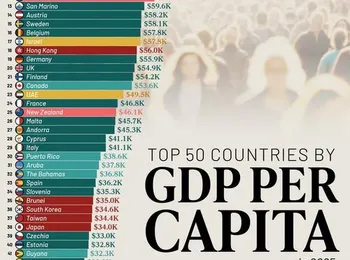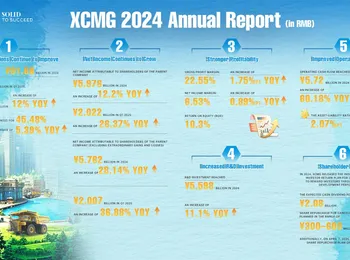Reward matters in investing, but so does risk. It’s not hard to see the potential reward for investors in high-yield stocks like Ford ( F 0.42% ) and UPS ( UPS 0.85% ) . Investors hope to profit from a 7.1% and 6.5% dividend yield, respectively, while waiting for the two companies to turn around their operating performance. Still, what about the risk of both companies cutting their dividends? Here’s a look at which company is best positioned when considering reward and risk.
Why Ford and UPS could both cut their dividends
The table below explains the problem well.
UPS aims to pay out about 50% of its earnings in dividends, with Ford aiming for 40% to 50% of its free cash flow ( FCF ) in dividends. Focusing on FCF, it’s clear that the initial guidance given by both companies in late January/early February didn’t imply much cover for potential dividends in 2025.
UPS plans to pay out $5.5 billion in dividends in 2025. Ford’s situation is a bit more complicated, as it pays a regular dividend of $0.15 a quarter and a supplemental dividend of $0.15 in the fourth quarter of 2024. The figure you see below is the total for 2024. These figures imply that Ford could use up to 89% of FCF on its dividend in 2025, with UPS using up 96%.
Fast-forward to early April and the "Liberation Day" tariffs, and the trading and cost environment changed so dramatically that both companies declined to reaffirm or update their guidance. Moreover, UPS management spoke of worse-than-expected declines in average daily volumes (ADV) in February and March and said second-quarter ADV would decline by 9%. Ford suspended guidance due to potential supply chain challenges, tariff implementation changes, and other potential trade restrictions. In addition, Ford’s outlook is challenged, as is UPS’, by a decline in consumer confidence due to tariff uncertainty. The bottom line is that deteriorating trading conditions could force both companies to cut their dividends in 2025, and investors need to be aware of this.
Free Cash Flow and Cash Dividends
Which stock is better positioned? Given the risk that both companies could cut their dividends, the key question is: Which stock would you be happier holding for the long term, even if it cuts its dividend? I think the answer is UPS, and the key factor is this: UPS’s underlying strategic development is on a much better trajectory than Ford’s.
Ford’s key strategic aim has to be to finesse a long-term transition from internal combustion engine (ICE) cars to electric vehicles (EVs), and it appears to be making slow progress on this. The company reports on three segments, with Ford Blue (ICE and hybrid cars and parts) generating $5.27 billion in earnings before interest and taxation (EBIT) in 2024, , while Ford Pro (Ford and Lincoln sales to commercial, government, and rental customers) made $9 billion. However, Ford Model e (EVs and digital services) lost $5.1 billion in 2024. Despite some improvement in the first quarter (a loss of only $849 million), Ford is far from demonstrating that it is on track to achieve its aim.
UPS However, it’s a different story at UPS. In fact, there’s a strong case for arguing that UPS will outperform if it cuts its dividend. A cut followed by a reset to investor expectations would direct investor attention to the company’s ongoing shift in its revenue mix. It’s moving away from low-profitability business-to-consumer (B2C) deliveries for Amazon.com , toward targeted, higher-margin deliveries in end markets like small and medium-sized businesses (SMBs) and healthcare. Meanwhile, management continues to invest in productivity-enhancing technologies (automation, smart facilities) that will enable it to cut costs by consolidating facilities. The pincer movement of focusing on higher-margin deliveries while simultaneously improving its productivity should lead to UPS’s improving return on assets. While SMB growth faces some near-term challenges relating to the current tariff environment, underlying SMB growth is impressive. It grew from a 27% share of its U.S. volume in 2021 to 28.9% in 2024, and management aims to hit 40% over time. It’s an even more impressive story in healthcare, where a combination of ongoing investments (including a forthcoming $1.6 billion acquisition of a cold chain transportation company in the healthcare sector) and organic growth are expected to double healthcare revenue from $10 billion in 2023 to $20 billion in 2026. Stocks to buy? Both companies could cut their dividends, but a compelling case exists for UPS recovering from it better than Ford. The car company needs to make inroads into an EV market dominated by Tesla , and that’s not easy in a challenging trading environment, particularly when Tesla is about to launch robotaxis . In contrast, UPS is on a good strategic track, even if the near-term headwinds are significant.
























